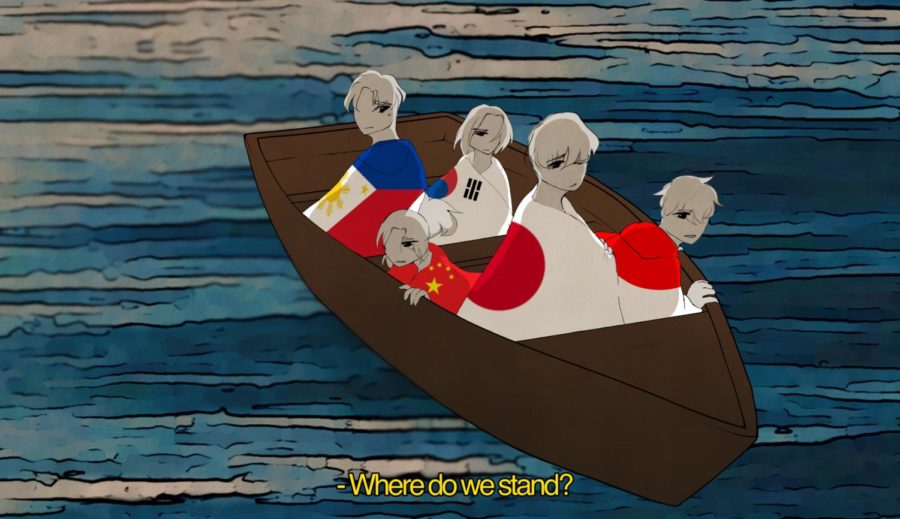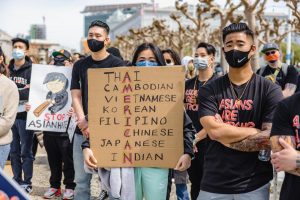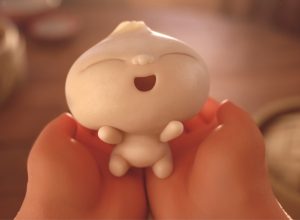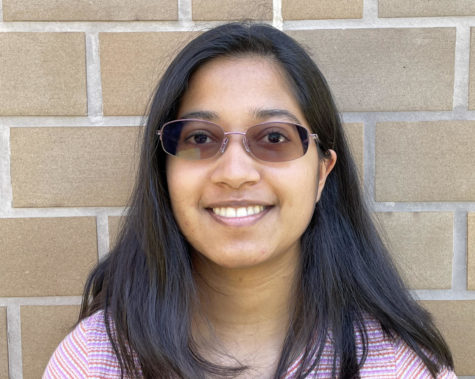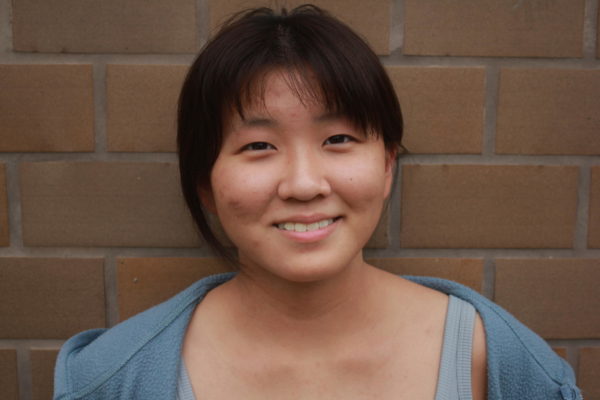Lack of Asian American history festers prejudice
Asian Americans lack the history to find a tangible understanding of their purpose in America, leaving many feeling stranded.
October 4, 2021
It wasn’t until my English teacher had my class read the article “The Truth Behind Indian American Exceptionalism” during a literature unit that I realized Indian history wasn’t just a random mass migration success story during the twentieth century.
For a long time, I was under the impression that Indians, like other Asian groups, were a new addition to American society. It seemed so obvious: the stereotypical “math nerd” concept, recent introduction of Indian representation in media, lack of U.S. history including South Asians. What else could possibly cause this shallow representation of my ethnicity?
Growing up, I didn’t see many Indian characters in my favorite TV shows; the only prominent character being Ravi from Jessi. When reading history textbooks I always assumed the word “Indian” represented Native-Americans. With the assumption that my ethnicity was still “new”, I thought history just needed more time to mold itself to finally recognize me, us, Indian-Americans.
So it came as a grim surprise when I learned that the first Indians immigrated to the U.S. during the late 18th century, barely a decade after the U.S. officially became a nation. It was also a shock to read that the first Asian American, Indian American and non-Abrahamic faith member elected to Congress in 1957: Dalip Singh Saund. The first large waves of South Asian immigration weren’t in the 20th century as I had expected, but directly following the Chinese Exclusion Act during the mid-19th century. All of these dates and facts muddled my presumptions of Indian Americans being “new” to the U.S., thus resulting in misrepresentation.
Surprisingly enough, it isn’t just Indian American history that hasn’t found its way into our history books, a majority of Asian American history is lacking. There are nearly 50 countries in Asia and about 20 million Asian citizens, yet our historical knowledge is still confined to the Chinese Exclusion Act of 1882 and incarceration of Japanese-Americans during World War II.
Other students of Asian descent also noticed this flaw. Vice President of the Asian American Club at DVHS, Gabriel Carter, is a Filipino American who was also concerned with the scarcity of Filipino history he learns at schools.
Carter explains, “[There is a lack of Filipino representation] in school: a lot of my historical knowledge comes from my parents. During the four years of learning history here, there was only one mention regarding the Philippines: the Battle of Bataan.”
The apparent lack of Asian American history being taught at schools becomes significant as untold history repeats itself through misrepresentation and prejudice. Hate crimes directed towards Asian-Americans have been prevalent throughout U.S. history, the Exclusion Acts being a mere drop in the ocean of this prejudice. Terrifying events like the Bellingham Riot against Sikh Indians and anti-Asian political slogans occurred with scarce awareness.
These prejudices, however, have only come into a wider focus in the wake of a series of Asian American related hate crimes due to COVID-19 related stigma. The last straw was an Atlanta shooting. Robert Long carried out a deadly shooting in three spas in Cherokee County and Midtown Atlanta, Georgia, during March of this year. He killed eight people, many of whom were of Asian descent. This event was suspected to be fueled by anti-Asian sentiment.
After this shooting, many people spoke out and among them was middle school teacher Liz Kleinrock . The 33-year-old Asian American teacher was enraged by the state of her community, so she contemplated skipping school on the day the news spread. But instead, she decided to give her students a lesson based on Asian American history: reading out poems of people with Japanese ancestry experiencing incarceration during the second World War.
“I feel like so many Asian elders have been targeted because of this stereotype that Asians are meek and quiet: don’t speak up and don’t say anything,” explains Kleinrock.
Untold history reoccurs, especially with historic political slogans harming our society today as they did in the past. One such example is directing the phrase “stealing our jobs” towards an unwanted minority. Surprisingly, this phrase was used repeatedly against the Asian American community as a way of disputing citizenship and immigration.
The Exclusion Act of 1882 suspended Chinese immigrants from entering the U.S. because of issues with Chinese success in the U.S. economy. Politicians urged the Exclusion Acts with slogans like, “Shall we have Chinese? No! No! No!” holding similar nuances to present day anti-Hispanic immigration policies. By 1907, Japanese Americans, too, were barred from the U.S. America signed an agreement with Japan: The Gentleman’s Agreement. As the South Asian population increased in America, anti-Indian sentiments surged. Sikh Indians were antagonized as well for gaining a financial upper hand in America: resulting in the phrase “tide of turbans”. This led to the inclusion of India, in 1917, to the “Pacific Barred Zone”. By 1940, all Asian American populations, with the exception of Filipinos, were denied citizenship opportunities.
Partial citizenship has been a hurdle for the Asian society when being accepted into America. I, myself, have felt the dual culture hurt my perception of myself. Many Asian American activists battled their way into being considered “American”: proving their “citizenship” through persistence. Teaching this history could help diminish the “dual identity”: creating inclusion.
Diablo Valley College History Professor Carmina Quirarte explains, “Asian American history is important because of their persistence. Especially when it comes to the 14th Amendment we usually identify it with African Americans: former slaves who were then able to become citizens. But, when we look at Asian American history, the 14th Amendment is important. If you go back to Supreme Court cases, you’ll notice in the early 20th century, many [cases] are of Asian Americans: people who were fighting for their citizenship and property rights.”
AP World History teacher, Evan Liddle, adds on, “[Asian Americans have] been in the U.S. only a little less time than Europeans have. [As a whole, they] have always been a part of America, a part of our history. And so [their history] is worth acknowledging, too.”
There are many ways we can include Asian American history in our schools. Our history curriculums are constantly evolving to include up-to-date recollections of the past and fresher perspectives.
We could follow Illinois’ example of Asian American inclusion in history. The Teaching Equitable Asian American History (TEAACH) Act issued by Gov. J.B. Pritzker requires schools to teach more Asian American history in school curriculums starting in the 2022-2023 school year. This act was created in the wake of the recent Asian Americans hate crimes, hoping to combat false stereotypes.
Quirarte explains, “[We should improve upon] inclusivity: we need to continue to evolve. We cannot continue using the same curriculum used in the 1990s.”
To learn Asian American history we should learn from their point of view, because only then can we better understand their struggles.
“We take history from the American perspective on how [Americans] took control of everything and tried to support the winning side. I just wish we had a more contextual perspective from the other side,” summarizes Carter.
In improving this flawed history, I hope the understanding of my community and all other Asian-American communities builds into empathy.
Illinois State Representative and sponsor of the TEAACH Act, Jennifer Gong-Gershowitz concludes, “Empathy comes from understanding. We cannot do better unless we know better. A lack of knowledge is the root cause of discrimination and the best weapon against ignorance is education.”

